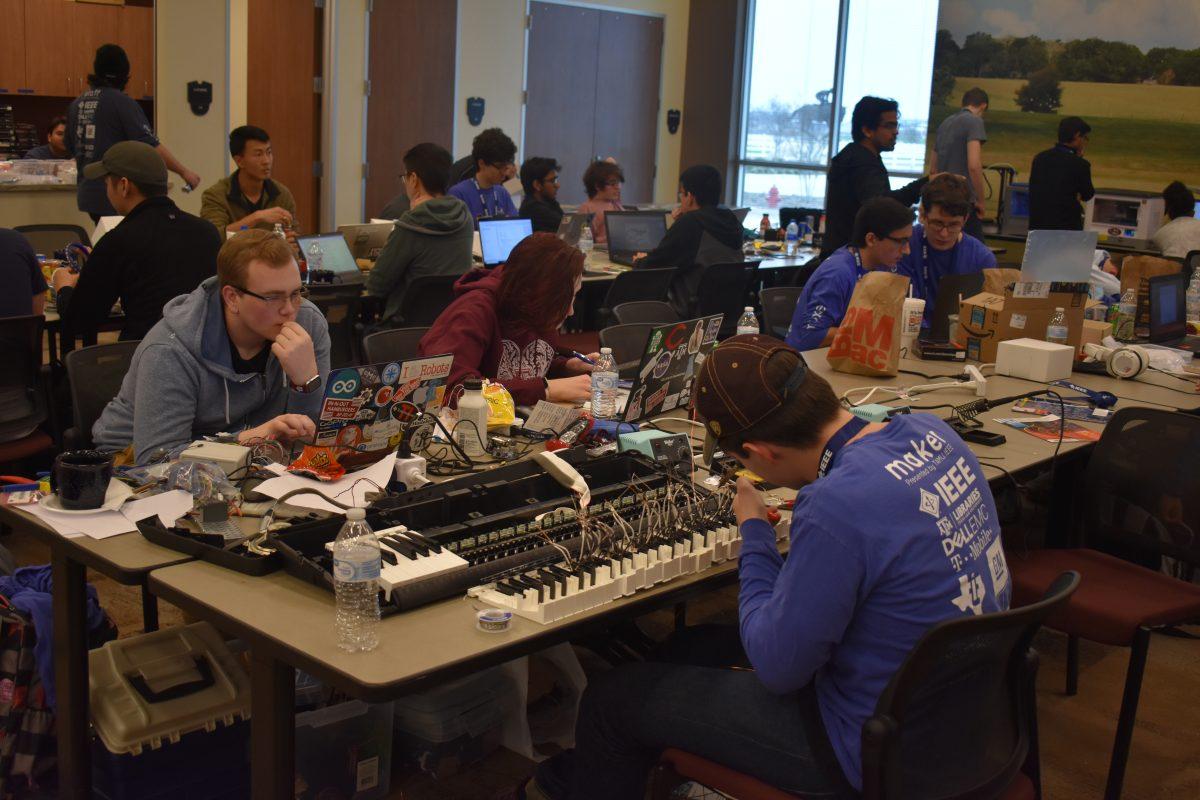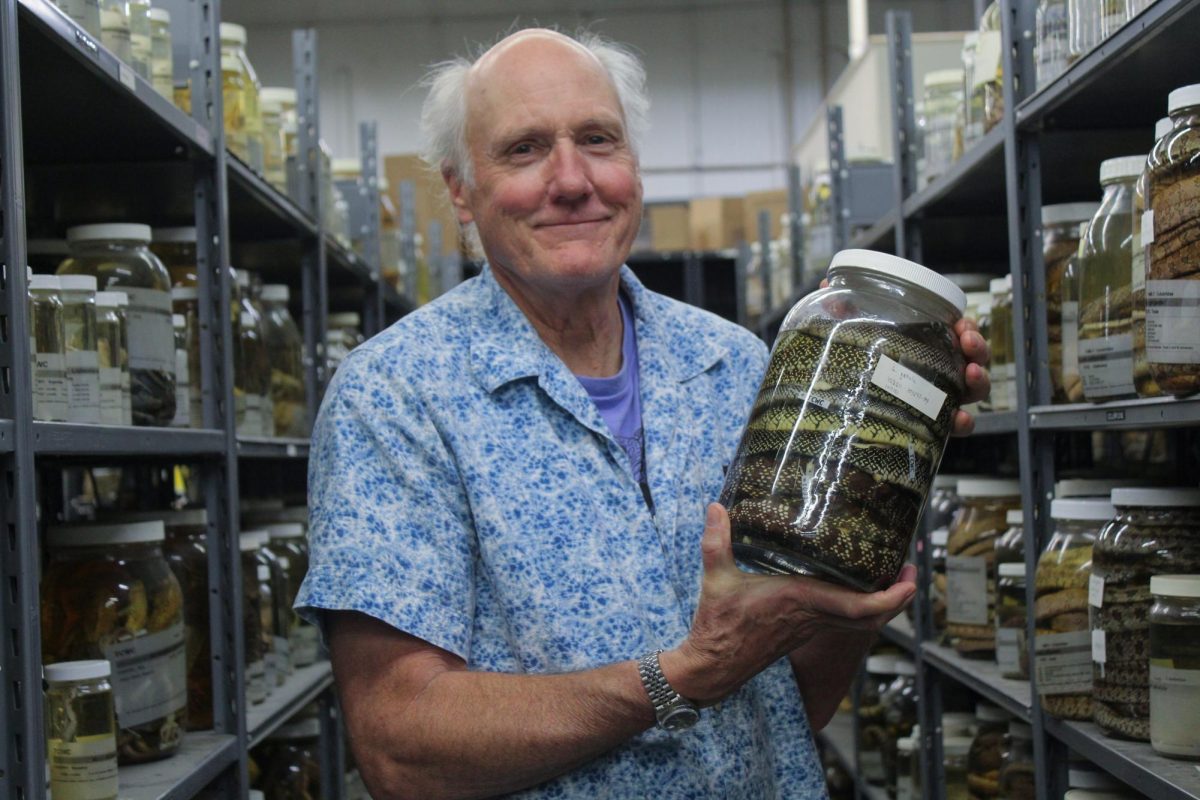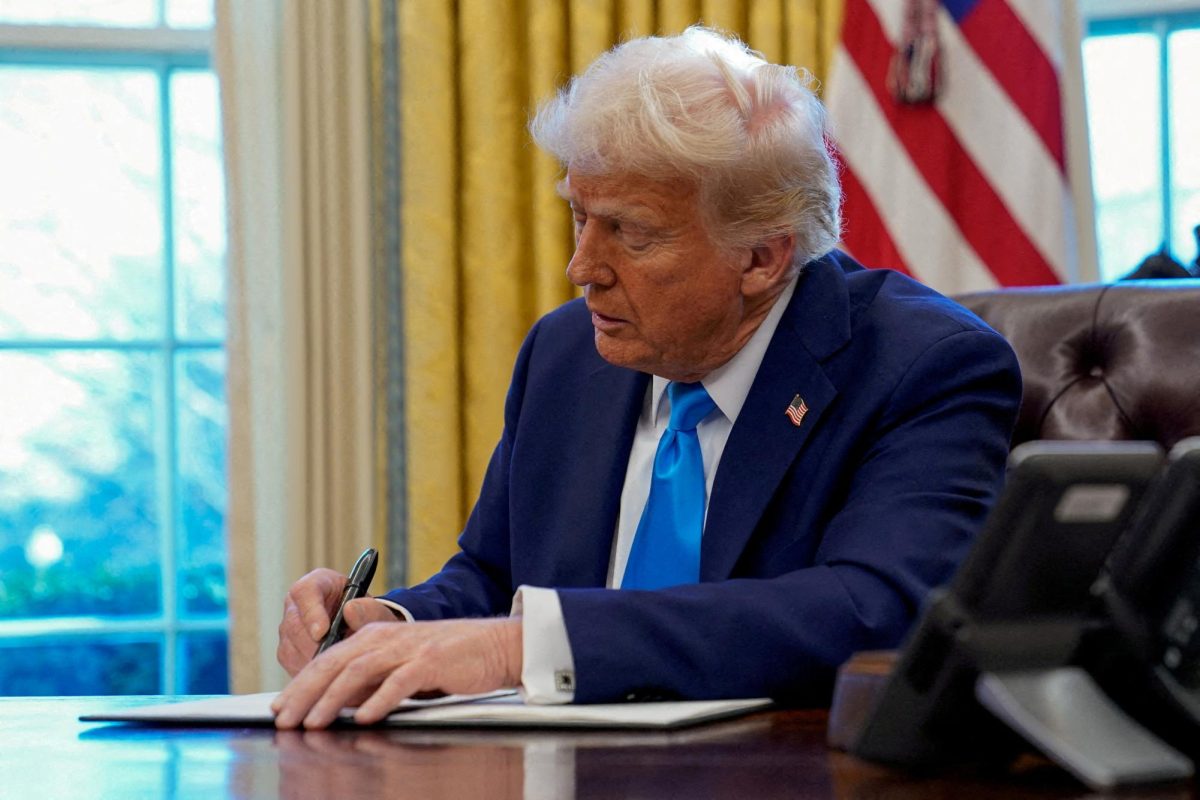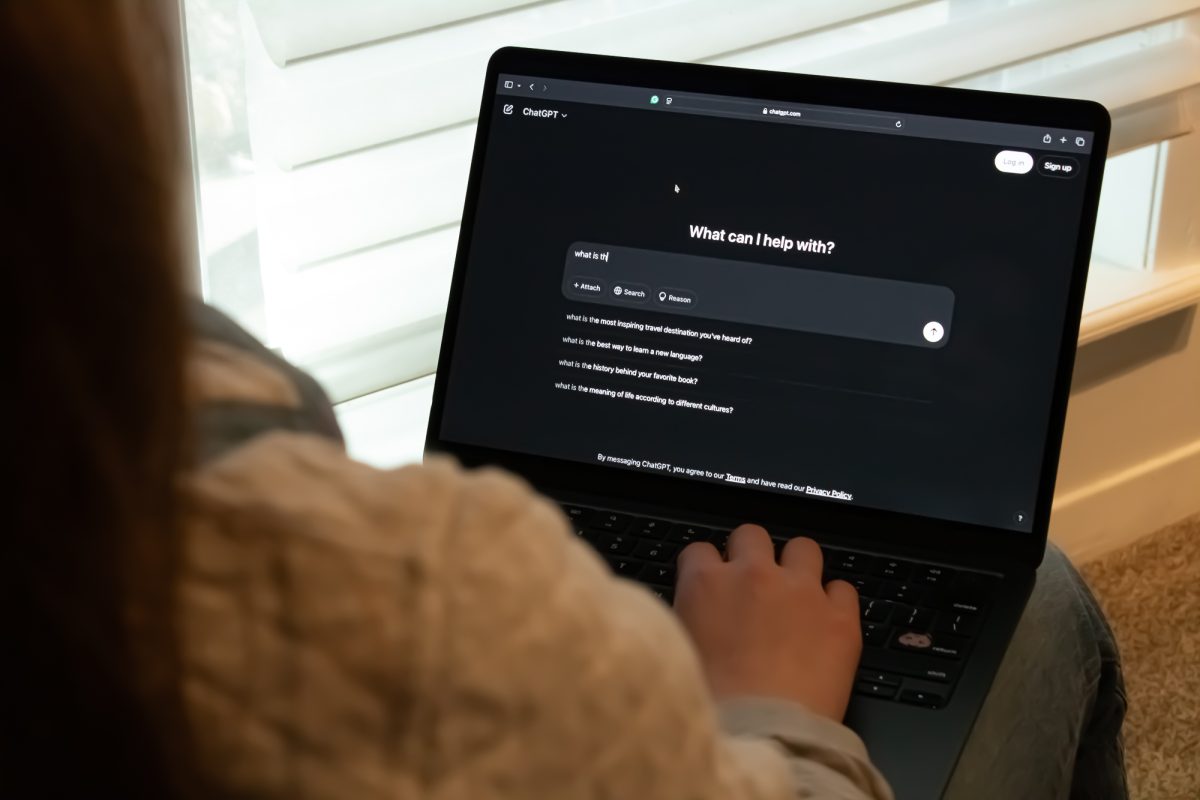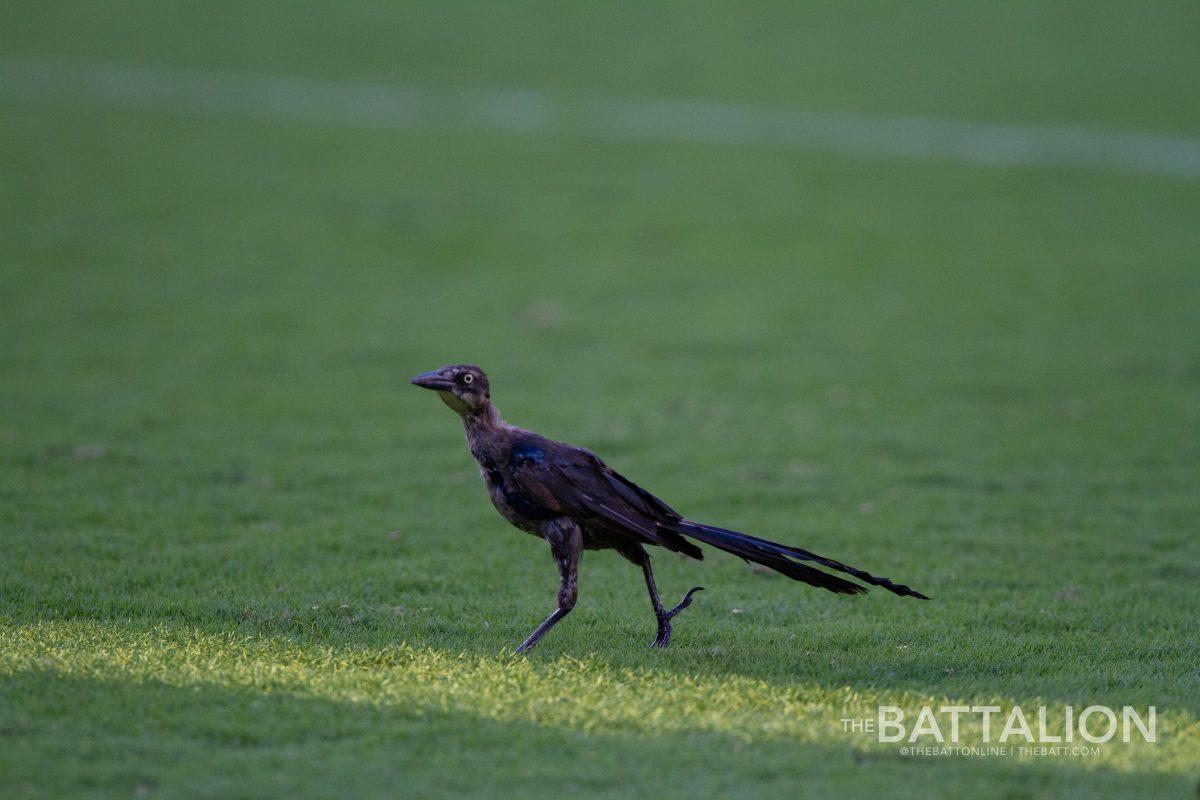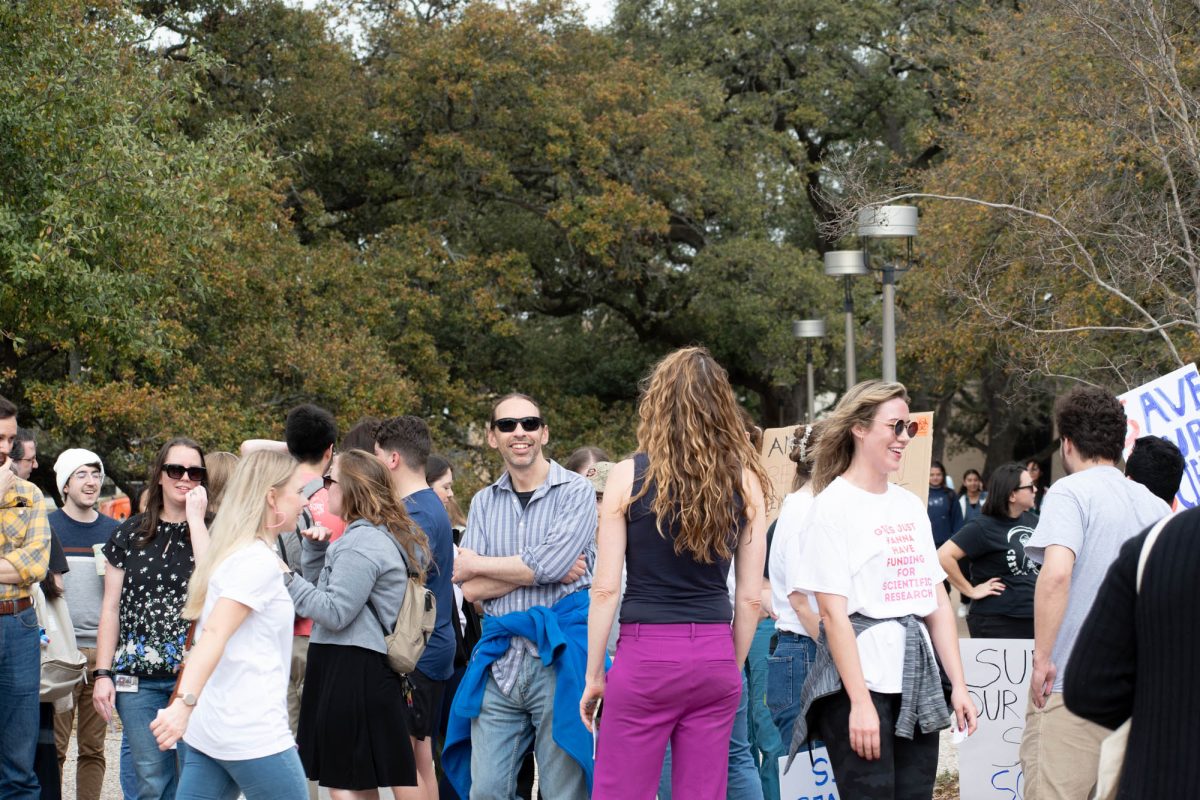The student chapter of the Institute of Electrical and Electronics Engineers at Texas A&M organized a 24-hour hardware hackathon open to both graduate and undergraduate students, where participants came up with innovative ideas and implemented them using a variety of available resources.
The event took place at the Hildebrand Equine Complex and began around 8 p.m. on Friday evening with the students presenting their projects at 8 p.m. Saturday evening. The idea was to stand out from most hackathons that involve software and have this event centered around hardware hacks. The participants were successful in realizing many concepts and created working hardware models, including an automatic bartender machine, a music synthesizer built into an electronic keyboard and a voice-activated home automation system.
The event saw industry representatives from companies such as Dell EMC and General Motors, along with a few professors from A&M, aiding students through suggestions stemming from their experiences in the field.
Byul Hur, assistant professor of electronic systems engineering technology, said he was impressed with the talent, skill set and projects on display at the event.
“This has been a very successful event with a lot of innovative projects,” Hur said. “The participants had access to a ‘shopping-center’ of electronic devices to work with, aiding them to come up with such amazing innovations.”
Sarhan Musa, Director of the Prairie View Networking Academy at Prairie View A&M University, said he felt a lot of effort was put into each of the projects, which reassured him of the bright future in store for students across A&M campuses.
“The level of soft skills and knowledge these guys possess is amazing. I find it hard to describe,” Musa said. “They have all been very hardworking and I am pleased to see that the freshmen have senior-level projects and the seniors have graduate-level projects. I am pleased to see these levels of innovation and it has reassured me of the bright future that an A&M University promises.”
Gabriel Wang, president of the student IEEE chapter and electrical engineering senior, said he was excited to be able to organize the first edition of this annual hardware hackathon.
“We had a smaller event called Mini Make last year and it gave us enough confidence to organize a bigger event based on hardware design,” Wang said. “To our knowledge, this is the only such event in the region focusing on hardware devices and sets us apart from most hackathons that are centered around software and programming and coding.”
Scott Ramsey, Class of ‘96, took part in the event as an industry specialist from Dell EMC, helping students develop and realize ideas. He said the event had successfully created a multidisciplinary environment.
“In a class, students usually are expected to do isolated work, like having to do just electrical work or having to do just mechanical work or whatever their major is,” Ramsey said. “What’s great about this event is that you are expected to work with a team of students from other fields and work with a limited amount of resources in a limited amount of time. It helps them build skills necessary out in the real world. I think that this multidisciplinary aspect of applied science is where the rubber hits the road and creates engineers able to handle those situations efficiently.”
Stephanie Wilcox, electrical engineering senior and chair of TAMU Make, said the response to the hackathon exceeded their expectations.
“We have been planning this event since the beginning of the fall semester,” Wilcox said. “There are a total of 91 participants working in over 20 teams of two to five each and this response is better than we expected.”
The participants were allowed to bring in their own materials to work with while the organizers ensured that a good selection of hardware components was also at each team’s disposal.
“The participants are allowed to bring in anything that wasn’t programmed beforehand,” Wilcox said. “But we also provided them with microcontrollers and chips like Arduinos, TI Launchpads and Raspberry Pi’s, among others to help them in their projects.”
Andrew Schwenn, computer engineering junior, and Kasper Egholm, electronic systems junior, teamed up to create an audio visualizer made out of a cube of LEDs that glowed to the beat of a song being played. They said they felt the provisions at the hackathon were top notch and they plan to compete again next year.
“The arrangements both in terms of food and in terms of the materials we were provided with was really good,” Schwenn said. “Although we brought in most of the stuff we worked with, the selection of microchips and the number of boards they have is impressive.”
Following a five-minute presentation on the project by all the participants, the judging panel — comprised of industry representatives and professors from A&M — arrived at a consensus around 9:30 p.m. on Saturday evening.
The winning team consisted of Himank Yadav, computer science senior, Juliang Li, computer science senior, Blake Karwoski, mechanical engineering senior, Klayton Wittler, mechanical engineering senior, and Jacob Sacco, computer engineering senior. The team worked on an automatic bartender machine which dispensed different liquids that go into a drink in set proportions decided by the user.
“This is something we came up with here at the hackathon; We built it just for fun,” Yadav said. “We had a great time working on it and learnt quite a bit too.”
Prizes included a Gopro camera, a set of wireless Bose earphones and an Amazon Echo, for each member of the teams placed first, second and third, respectively.
The event was brought to a close with a vote of thanks to all the sponsors. Eden Habtegebrial, electrical engineering junior and Technical Corporate Sponsorship Chair for the IEEE outfit on campus, said there will be an even bigger and better event next year.
“We appreciate all the participation we have had this year,” Habtegabrial said. “We plan to have an even bigger hackathon with more companies and students taking part next year.”
TAMU Make focuses on hardware rather than software creation
February 19, 2018
Photo by Provided
TAMU Make
0
Donate to The Battalion
$2065
$5000
Contributed
Our Goal
Your donation will support the student journalists of Texas A&M University - College Station. Your contribution will allow us to purchase equipment and cover our annual website hosting costs, in addition to paying freelance staffers for their work, travel costs for coverage and more!
More to Discover




